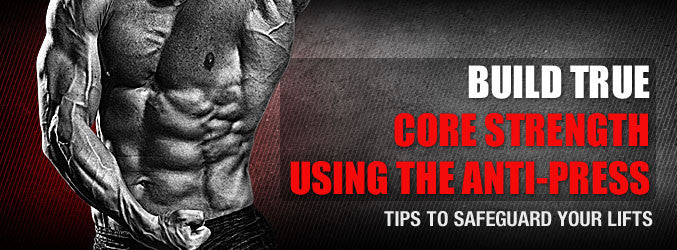
Spinal health. The words do not mean much to most people in the gym, tossing around the weights like rag dolls in their pursuit of greater muscle mass and strength. For them, the weights are a means to an end, and the more violently they are treated, the greater the results which are seen. By the time phrases like ‘spinal health’ mean something to most lifters, they’ve been training recklessly for years and have incurred damage which is often irreversible. But this doesn’t have to be the case with you!
Training safely is always the first line of defense against long term injuries to the back. Always warm up with 5-10 minutes of cardio, followed with 5 minutes of stretching. Then move on to several sets of lighter weights for warm up sets, before going all-out heavy with your compound movements for muscle mass.
Going beyond that, athletes can minimize any future risk of damage to their spine or other parts of the body, through proper training which targets the goal of building core strength. In other words, athletes can prevent injuries from happening before they occur, but strengthening the areas which receive the most undue stress, and are common failure points on lifts. Building up these areas using selected exercises can make one injury-free, or at the very least minimize how many injuries are occurred over the years.

There is no denying the importance of building core strength. Essential traits such as power, balance, control and agility all arise as a result of possessing solid core strength. At the same time, issues such as poor performance and worse, injury, occur an athlete fails to fully develop his or her core strength. It is imperative for lifters to research core training exercises and develop a strong understanding of the fundamentals behind how their bodies work, as well as which exercises are available to target these muscle groups.
Defining an exercise as “breakthrough” is a pretty big deal. There aren’t too many “new” or “advanced” ways to train a muscle group, or sets of muscle groups. You pick up heavy weights, and you put them down. You gain muscle as a result. Millions of lifters have spent billions of hours in the gym or garage, training over the past century, and the results in terms of training protocols have not changed all that much. A bench press is still a bench press, right? However, now and then, a movement comes along that, quite frankly, nobody had discussed or published on a mainstream level, and was thus unknown to most lifters in the gym. One such movement, highly useful for building core strength to protect spinal health, yet relatively unknown in most training centers, is known as the “Anti Press”. Are you ready to dive in?

Let’s break down the mechanics behind the Anti-Press. Start by grabbing the handle of your suspension strap. This can be a Blast Strap, TRX, or any variety. Face sideways. Lean outward, leaving your body at a 60 degree angle with the floor. Brace the core of your body from twisting, and press yourself straight out, continuing until both of your arms are extended fully. Finally, bring your arms up straight overhead, pausing for one second. The flexion of anti-lateral and anti-extension variety will be taking place at this point.
Obviously, you won’t want to go extremely heavy with this movement. Targeting the core with repetition is the name of the game, so sets of 10 to 20 or more are acceptable. The aim of this movement should be to FEEL the muscles of your body working through every inch of this movement. Do not fall into the trap of trying to rush through this movement either. This is not an ego lift. This is a safety lift, a long-term movement you utilize in order to maintain training and recovery viability for year, even decades. Think about the long game. You want to be training just as hard and just as intensely in 20 years, right? Developing your core strength now is one of the keys to achieving this goal.

Many lifters find great use in recording video of themselves using this exercise. Examine your form from an angle you’re certainly not used to observing. This is an advanced lift, with a near-infinite possible angles of approach. You CAN hurt yourself with improper angle, but you can also heal, grow, and improve your future lifting capabilities by using this exercise correctly.
Remember that this unique and creative exercise stimulates a number of muscle groups. Therefore its use should be carefully measured in order to not interfere with muscle group training sessions, if you subscribe to a “body parts by day” training regimen, as is used by most bodybuilders. If you train your full body regularly using a CrossFit or other training regimen, then this exercise will fit right in. The very idea of “anti press” intonates an approach counter to the norm. At the same time, however, you should continue using your standard training, nutrition, supplementation and recovery protocols. You are using a new and advanced training protocol -

Always keep an open eye to creativity and ingenuity when using this exercise. Small modifications in foot placement and angle of cable can radically change which parts of the body are being targeted. Listen to your body, and take notes to record how different muscle groups are affected through the use of different angles of approach. Develop a list of which angles, rope length, and foot positions were most useful for you, and train accordingly. Good luck!


